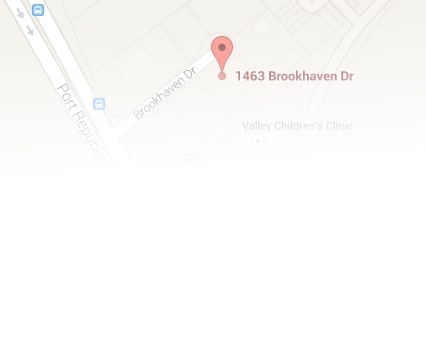Medical Malpractice from Misdiagnosis
One of the most common forms of medical malpractice is from misdiagnosis. As the name indicates, misdiagnosis occurs when a doctor or other health care provider incorrectly diagnoses or fails to diagnose a medical condition, illness, or disease. That diagnostic error then causes the medical condition to go untreated, for treatment to be delayed, or for the incorrect treatment to be given. A misdiagnosis can then cause the actual problem to get worse, lead to new illnesses or diseases, or even lead to death.
The Extent of the Medical Malpractice Misdiagnosis Problem
Misdiagnosis is a very real threat to the health and safety of hospital and healthcare patients. According to recent studies, misdiagnosis occurs in approximately 10-20% of all medical treatment.[i] Even if only 5% of patients are the victims of misdiagnosis in medical care, that means at least 12 million Americans per year are victims of an incorrect diagnosis or a failed diagnosis.[ii] The consequences of this problem are severe: one fairly recent study indicated that approximately 28% of misdiagnosis cases or undiagnosed matters threatened the life of patients, caused permanent disability, or led to the death of the patient.[iii] That means that as many as 160,000 patients per year suffer permanent injury or death from misdiagnosis.[iv]
Understanding Differential Diagnosis
For a legal consultation with a personal injury lawyer, call (434) 817-3100
Misdiagnosis presents a significant medical negligence problem for patients when doctors, nurses or other healthcare providers fail to diagnose a serious medical condition and mistakenly believe that a patient’s complaints, discomfort, and problems are caused by a less serious condition. This failure to identify the more serious condition can often be the result of failing to follow the rule known as “differential diagnosis,” and this may result in medical malpractice.
Stated simply, when figuring out what sort of illnesses or conditions a patient is experiencing, doctors and other healthcare providers have a duty to rule out the “worst first.”[v] That means that a physician “who is diagnosing a patient’s symptoms has a duty to rule out the most dangerous, treatable potential diseases first.”[vi] If a doctor fails to take this basic step and misses the most dangerous condition, the doctor may have committed medical malpractice.
Causes of Misdiagnosis

Virginia Lawyer Robert Byrne
Medical Malpractice from misdiagnosis of medical conditions may result from a number of medical errors. Common medical errors that cause a missed diagnosis include a doctor’s failure to properly review and follow up on test results or to properly examine diagnostic exams. Some blame the prevalence of misdiagnosis on doctors and staff needing to devote a significant amount of time to paperwork and struggling with insurance companies to get paid for the care they provided. [vii] Other causes may be miscommunication between the physicians, nurses, and other hospital staff, lack of proper training, or overworked staff. Regardless of the cause of the misdiagnosis, most of these incredibly costly medical errors are preventable.[viii]
Most Common Misdiagnosed or Undiagnosed Conditions
The most common diseases and conditions that are misdiagnosed are pneumonia, congestive heart failure, acute kidney failure, cancer, and urinary tract infection.[ix] Other common misdiagnoses are for heart attacks, stroke, acute aortic dissection[x], pulmonary embolism[xi], cancer (primarily breast cancer and colorectal cancer)
[xii], clogged arteries, infection, and heart attack.[xiii] Depending on the circumstances, this misdiagnosis may give a patient the right to pursue a medical malpractice case for compensation.
Steps to Prevent Misdiagnosis
Click to contact personal injury lawyers today
According to the National Patient Safety Foundation, there are steps patients can take to reduce the possibility of suffering a misdiagnosis in their medical care. In a nutshell, patients need to be involved with their medical care, such as by knowing and conveying to health care providers the vital information necessary for a proper diagnosis to occur. This means patients must be able to, among other things, describe their symptoms, explain their healthcare history, keep and provide records of past treatment they have received, have all of their healthcare providers aware of what the other providers are doing, and to follow up on diagnostic tests and exams to learn the results and what it means for health and healthcare.[xiv]
Legal Help for Misdiagnosis
If you or a loved one suffered a serious injury due to a healthcare provider’s misdiagnosis, incorrect diagnosis, or failure to diagnose an illness or disease, you may have a misdiagnosis medical malpractice case and the legal right to obtain compensation. For more information about a medical malpractice claim based on misdiagnosis, please contact Robert E. Byrne, Jr., a Virginia Medical Malpractice Attorney at MartinWren, P.C. Bob can be reached at (434) 817-3100 or by email at [email protected].
We are based in Charlottesville but handle cases throughout Virginia. We offer free consultations and do not charge any legal fees unless we obtain a financial recovery for our clients.
This information is for informational purposes only and does not constitute legal advice. Please see Medical Malpractice Claims in Virginia for more information about medical malpractice claims.
Call (434) 817-3100 or complete a Case Evaluation form



